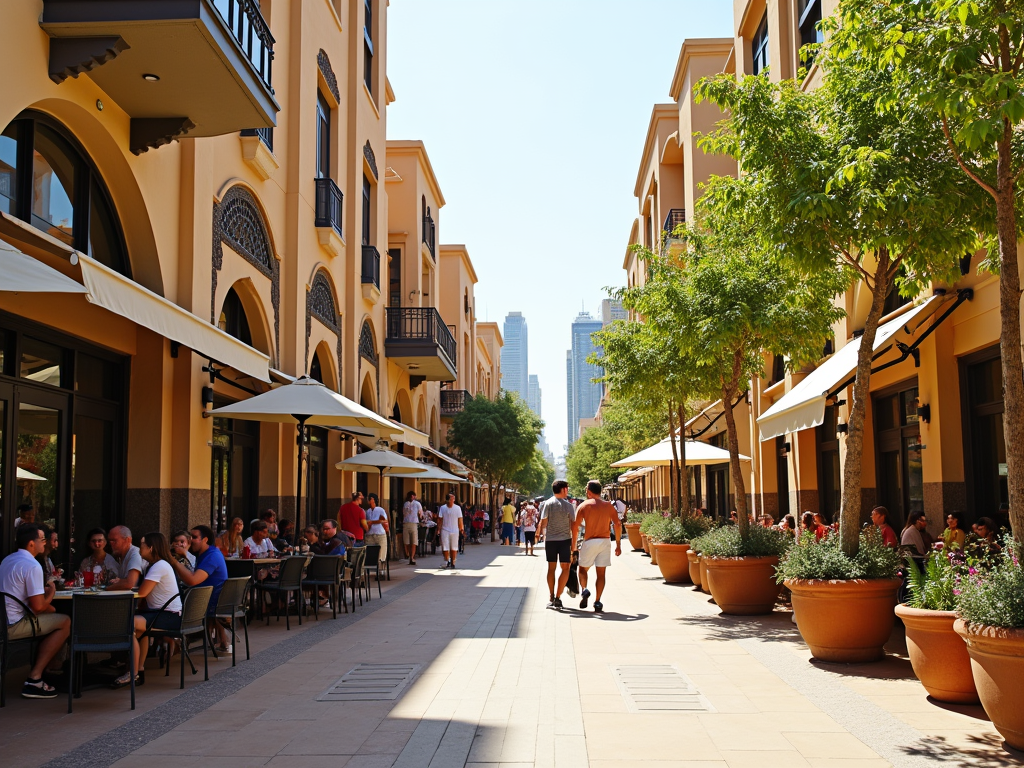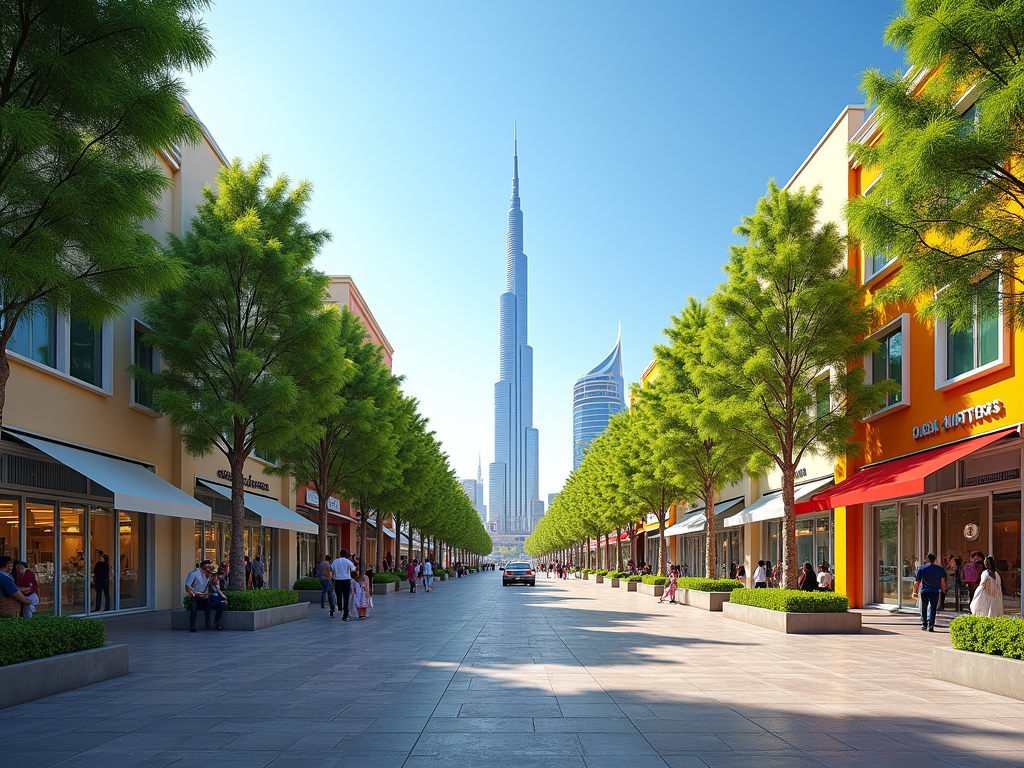Dubai’s mixed-use development projects have seen substantial growth in recent years, reflecting the city’s ambition to create integrated urban communities that offer both residential and commercial spaces. These developments often combine residential units, office spaces, retail hubs, and recreational amenities, catering to a diverse population and attracting global investments. As the city evolves, it continues to attract businesses and residents alike, further fueling the demand for innovative and sustainable mixed-use environments. In this article, we dive into the reasons behind Dubai’s booming mixed-use developments, the key projects shaping the landscape, and the challenges and opportunities that lie ahead.
The Rise of Mixed-Use Developments in Dubai

The growth of mixed-use developments in Dubai can be attributed to several factors driving urbanization and economic diversification. The UAE’s strategic location and robust infrastructure have positioned Dubai as a global hub for tourism, trade, and finance. In addition, the desire for a modern lifestyle that combines work, play, and living spaces has created a demand for mixed-use projects. Here are a few key aspects contributing to this trend:
- Economic Growth: Dubai’s economy has diversified beyond oil, leading to increased investments in real estate and construction.
- Sustainability Goals: The city aims for sustainable urban development, and mixed-use projects minimize the need for transportation while maximizing utility.
- Community Living: These developments foster a sense of community, where residents can live, work, and socialize in proximity.
- International Investments: The city’s openness to foreign investment has attracted global developers looking to capitalize on its booming market.
- Modern Urban Design: Innovative architectural designs cater to diverse lifestyles and encourage community interaction.
Key Mixed-Use Development Projects in Dubai

Several landmark mixed-use developments have transformed Dubai’s skyline and urban experience. Some notable projects include:
- Downtown Dubai: Home to iconic structures like the Burj Khalifa and Dubai Mall, this area combines residential, leisure, and commercial spaces in a vibrant urban hub.
- Dubai Marina: A prime waterfront community that features residential towers alongside retail outlets, restaurants, and leisure activities, catering to both locals and tourists.
- City Walk: This urban lifestyle destination combines retail, dining, and entertainment with contemporary residential options, creating a bustling environment.
- Expo 2020 Dubai Districts: Developed for the World Expo, these designated areas aim to provide innovative mixed-use environments post-event, enhancing Dubai’s long-term urban planning.
- Bluewaters Island: Home to the iconic Ain Dubai, this mixed-use development integrates residential living with retail, hospitality, and entertainment.
While Dubai has seen remarkable success in its mixed-use developments, several challenges persist that need to be addressed for sustainable growth. These include:
- Regulatory Hurdles: Navigating through bureaucracy and meeting compliance standards can slow down project timelines.
- Market Saturation: With numerous developments vying for attention, the risk of oversupply can impact rental yields and investment returns.
- Environmental Concerns: Developers face pressure to incorporate eco-friendly practices into their projects to align with global sustainability trends.
- Community Engagement: Creating a sense of belonging within mixed-use spaces requires ongoing effort and community engagement strategies.
- Economic Fluctuations: Global economic factors can affect local real estate markets, impacting the success of new projects.
Future Opportunities in Mixed-Use Developments
Looking ahead, there are immense opportunities for further growth and innovation in Dubai’s mixed-use developments. As the city continues to adapt to changing demographics and lifestyle preferences, developers can explore various avenues:
- Smart City Initiatives: Incorporating technology and smart infrastructure in developments to enhance urban living.
- Wellness-focused Communities: Designing projects that prioritize health and well-being, incorporating green spaces and fitness facilities.
- Integration of Culture: Fostering cultural experiences within mixed-use environments, encouraging tourism and local engagement.
- Flexible Workspaces: Addressing the rise of remote work by creating adaptable office spaces within residential communities.
- Affordability: Addressing housing needs by developing affordable mixed-use projects to accommodate a range of income levels.
Conclusion
The growth of mixed-use developments in Dubai is a testament to the city’s commitment to creating vibrant, integrated communities that cater to a diverse population and enhance urban living. By leveraging economic growth, attracting global investments, and embracing sustainable practices, Dubai has positioned itself as a leader in modern urban planning. Despite facing challenges, the opportunities for innovation and growth in mixed-use developments remain boundless, reinforcing Dubai’s status as a dynamic global city. As the landscape of urban living continues to evolve, these developments will likely play a crucial role in shaping the future of the UAE’s iconic city.
Frequently Asked Questions
1. What are mixed-use developments?
Mixed-use developments are real estate projects that integrate residential, commercial, and sometimes recreational spaces into a single community, promoting a more connected and convenient urban lifestyle.
2. Why are mixed-use developments important?
They are important because they encourage a blend of living, working, and leisure in one location, reducing the need for transportation, fostering community interaction, and promoting economic growth.
3. What are some challenges faced by mixed-use developments in Dubai?
Challenges include regulatory hurdles, market saturation, environmental concerns, community engagement, and economic fluctuations that can impact the success and sustainability of projects.
4. How does Dubai’s mixed-use development policy promote sustainability?
Dubai’s policies encourage sustainable urban planning practices by integrating eco-friendly technologies and creating environments that reduce the carbon footprint, enhance green spaces, and improve quality of life.
5. What future trends can we expect in Dubai’s mixed-use developments?
Future trends may include the incorporation of smart technology, wellness-focused designs, cultural integration, flexible workspaces, and more affordable options to accommodate diverse income demographics.



